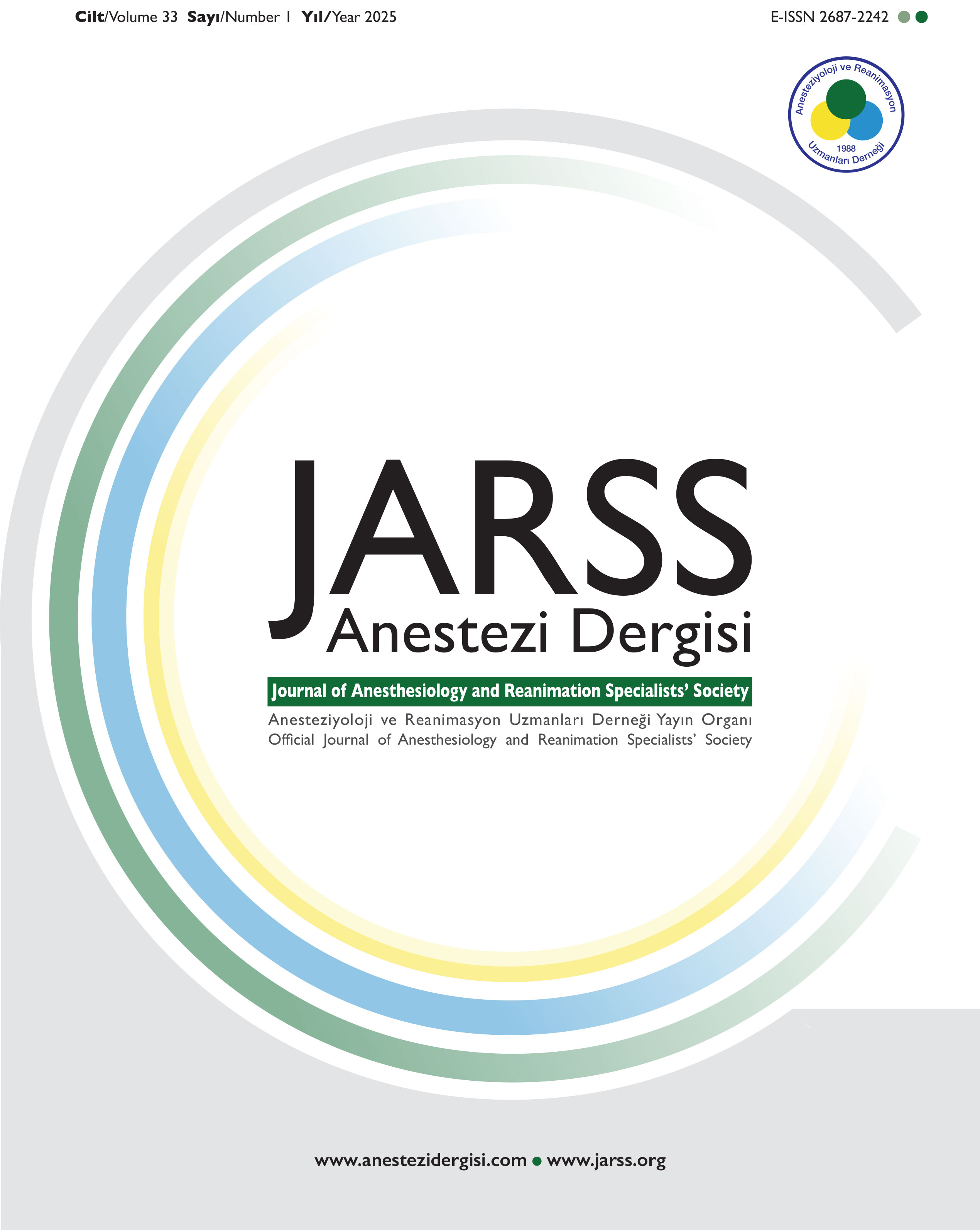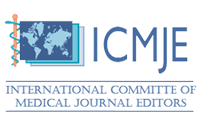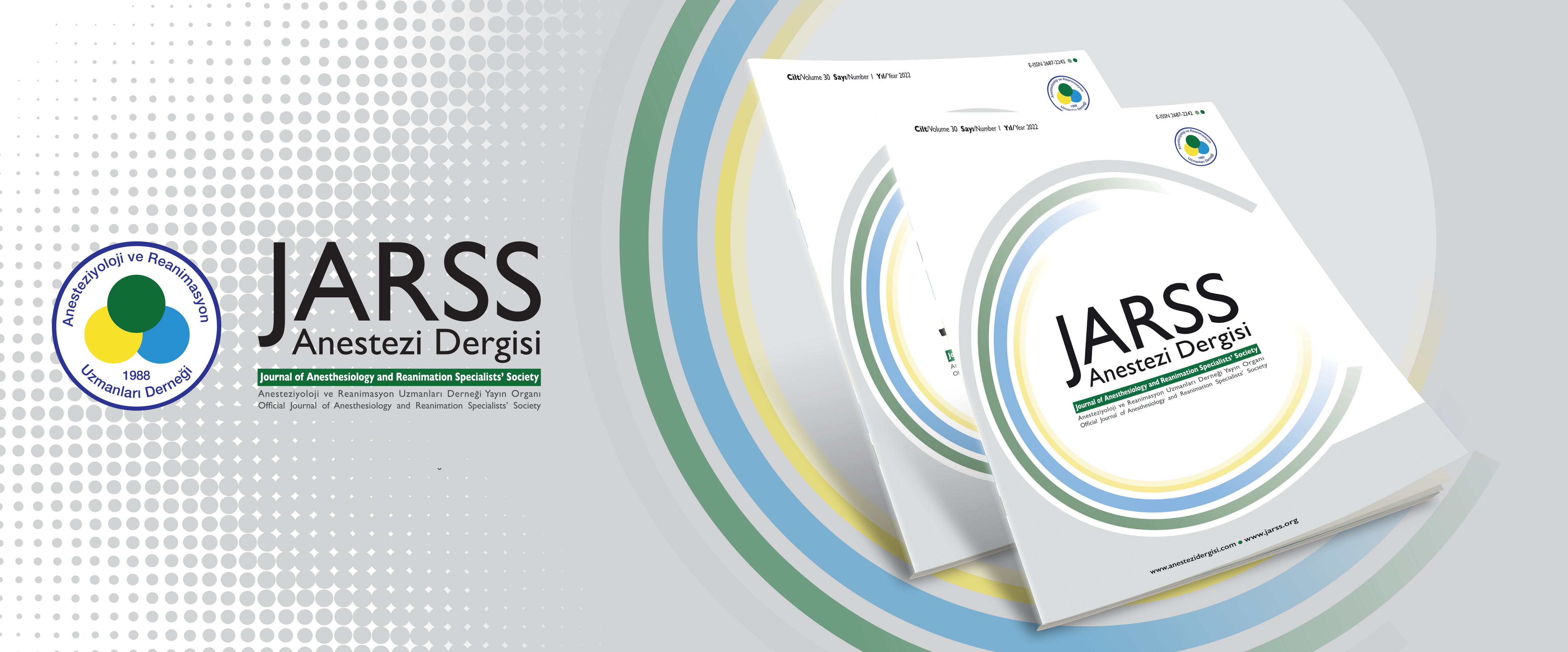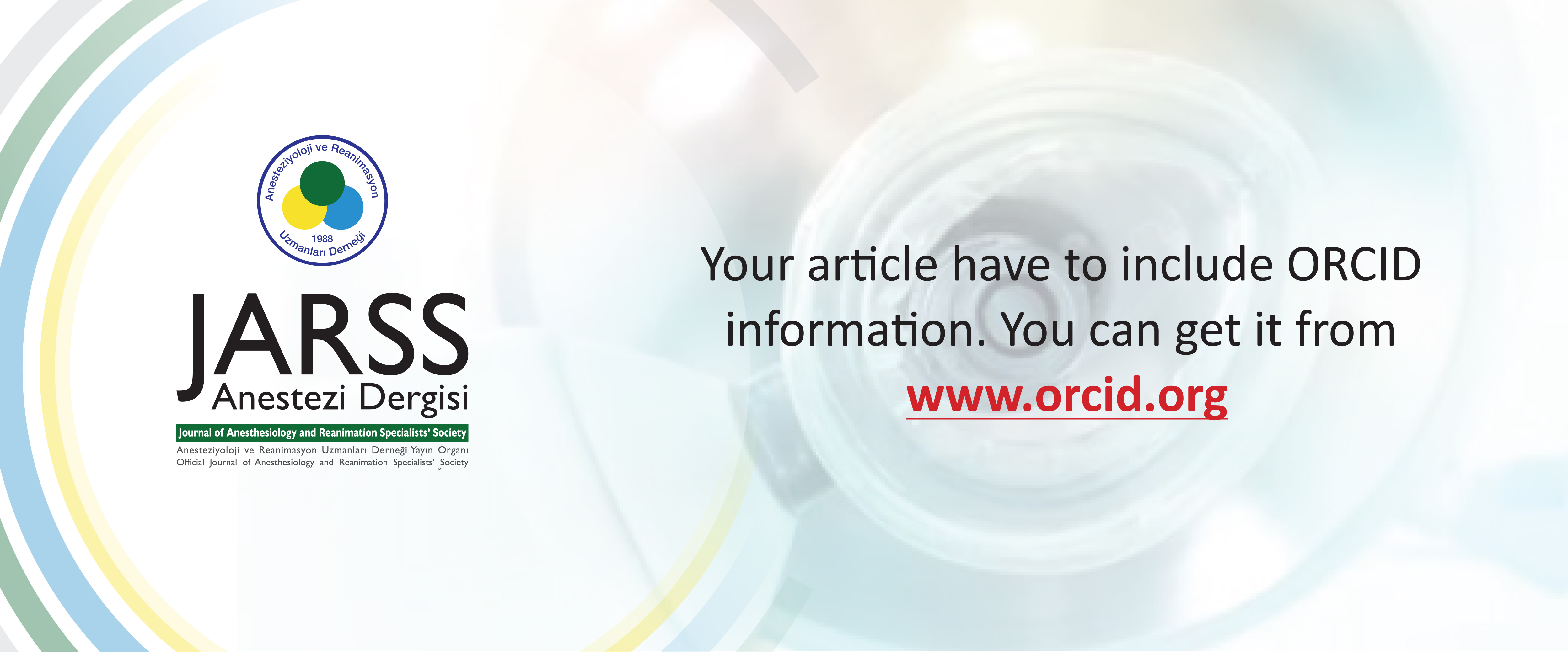Volume: 30 Issue: 2 - 2022
| 1. | Cover Page I (1048 accesses) |
| 2. | Advisory Board Pages II - V (538 accesses) |
| 3. | Contents Pages VI - VII (390 accesses) |
| REVIEW | |
| 4. | Retinopathy of Prematurity and Anesthesia Management Selin Erel, Azer İlbengü Kaptan, Demet Coskun, Ahmet Mahli doi: 10.54875/jarss.2022.99266 Pages 75 - 83 (667 accesses) Retinopathy of prematurity (ROP) is one of the preventable causes of blindness that occurs at an early age. The incidence of ROP has increased due to the rapid increase in preterm births, deficiencies in newborn care, and uncontrolled oxygen therapy. Due to the comprehensive examination of newborns with ROP or the preference of laser photocoagulation, which is a surgical treatment method, this patient group is encountered more frequently in the operating room. In this review, an overview of ROP disease is presented with the current information in the literature and the characteristics of the anesthesia managements are discussed. |
| ORIGINAL RESEARCH | |
| 5. | COVID-19 Burnout Level of Health Staff Working and not Working in Intensive Care Units Bilge Banu Taşdemir Mecit, Sevim Şeyda Opak, Özgür Deniz Yıldırım, Remziye Gül Sıvacı doi: 10.54875/jarss.2022.27928 Pages 84 - 88 (517 accesses) Objective: We aimed to compare the burnout levels of health professionals working and not working in intensive care during the COVID-19 pandemic process. Methods: 50 healthcare workers working in COVID-19 intensive care units and 50 healthcare workers working outside of intensive care units were participated in the survey. All healthcare professionals working actively during the COVID-19 pandemic process and volunteering for the research were included in the study. A survey consisting of 22 questions on the Maslach Burnout Scale was applied to a total of 100 healthcare professionals, including faculty members, specialist doctors, assistant doctors and nurses. Results: Although the Maslach Burnout Scale scores were higher in COVID-19 intensive care workers, it was not statistically significant.However, the ‘Depersonalization’ subscale scores of the Maslach scale were found to be statistically significantly higher in COVID-19 intensive care workers (p=0.039). Also, the mean scores of ‘Depersonalization’ were found to be significantly higher in males who participated in the survey (p=0.008). Conclusion: This study, which we conducted on the healthcare professionals of our hospital, showed that COVID-19 causes moderate burnout syndrome in those working in the intensive care unit. |
| 6. | Retrospective Evaluation of the Effect of Prophylactic Norepinephrine Infusion on Preventing Spinal Anesthesia Induced Hypotension During Cesarean Section Sinan Ataibiş, Gökhan Özkan, Serkan Şenkal, Umut Kara, Mehmet Emin İnce, Ahmet Coşar doi: 10.54875/jarss.2022.63497 Pages 89 - 96 (622 accesses) Objective: Maternal hypotension after spinal anesthesia is a frequent and important deleterious complication that requires treatment. Current study aims to evaluate the effectiveness of prophylactically administered norepinephrine infusion protocol in preventing spinal anesthesia induced hypotension in elective cesarean deliveries performed in our institue between November 2017 and April 2018. Methods: Patients underwent cesarean section were evaluated retrospectively. They were divided into two groups as the norepinephrine group (n=32) and the control group (n=79), according to the treatment methods applied prophylactically to prevent spinal-induced hypotension. Patient demographics, 1st and 5th minutes APGAR scores, umbilical cord blood gas pH, newborn weight, overall amount of ephedrine used, adverse conditions such as maternal nausea and vomiting, systolic blood pressure, and heart rate were collected from the anesthesia records and medical electronic systems. Results: Total of 111 patients were included in the analysis. There was no significant difference between umbilical artery pH values. The first (7.01 vs 7.34) minute mean APGAR scores in control group were significantly lower (p=0.008). The incidence of hypotension before delivery was lower in the norepinephrine group (40.6%) compared to the control group (74.7%) (p<0.05). The mean total dose of ephedrine was greater in the control group (13.67 vs 6.09 mg, p<0.01). Conclusion: We believe that prophylactic norepinephrine infusion is effective in preventing spinal-induced hypotension for cesarean deliveries. |
| 7. | A Guide for Reporting Perioperative Cases: Adaptation of Anaesthesia Case Report (ACRE) Criteria into Turkish Murat İzgi, Tuba Bayir, Murat Tümer doi: 10.54875/jarss.2022.52386 Pages 97 - 103 (622 accesses) Objective: This study was carried out in order to create the Turkish version of the Anaesthesia Case Report (ACRE) criteria, to increase the quality of perioperative case reports in the field of anaesthesiology and reanimation and to establish a standard in this field. Methods: These criterias were translated into Turkish independently by authors and then a draft was determined. In order to ensure language equivalence, the adapted checklist was checked by an expert translator and the final version was created by making necessary corrections. Then, 20 case reports published between 2016 and 2021, indexed in the Turkish Medical Index, were examined by two independent specialists in the field of anaesthesiology and reanimation. Finally, inter-rater agreement was evaluated using the Bland-Altman method by calculating the intra-class correlation coefficient (CCT) and agreement percentages. Results: The case report studies analyzed as a result of the evaluations made differed in the reporting frequency of the criteria. Although CCT values varied between 0.484 and 0.905, the agreement between anaesthesiology and reanimation specialists was statistically significant (p<0.05). According to the Bland-Altman chart, agreement was found between the raters. Conclusion: Although ACRE criteria are rarely required for the review of perioperative case reports, there is solid evidence that standardized reporting guidelines improve the reporting quality of studies. It is thought that ACRE will bring a measurable standard status to case reports, and it will be beneficial and guide for researchers who will work in the field of anaesthesiology and reanimation in our country. |
| 8. | Evaluation of the Attitudes of Anesthesia Residents and Specialists in Patients Who Have Had COVID-19 Before Elective Surgery Oya Kale doi: 10.54875/jarss.2022.69335 Pages 104 - 111 (572 accesses) Objective: To evaluate the knowledge and opinions and increase awareness of anesthesia residents and specialists about the timing of elective surgery of patients who have had COVID-19. Methods: After the approval of the hospital ethics committee, the link of the questionnaire form was sent to the anesthesia residents and specialist online via e-mail and social media application (WhatsApp mobile application). Questions were asked regarding demographic data, sources of information regarding COVID-19 infection, timing of elective surgery, preoperative preparation and risk factors, and informed consent. Results: In the study, 78% were specialist physicians, 66% were in the 30-50 age range and 63% were female of the 174 participants. The most used resource was the Ministry of Health Guidelines (79% specialist, 63% resident). Among the information sources used, hospital and in-clinic training, World Health Organization website and scientific publications responses were significantly different between the groups (p=0.002; p=0.015 and p=0.013). The times of taking elective surgery after COVID-19; While the responses of specialists and residents were significantly different in asymptomatic patients, they were found to be similar in patients with symptomatic disease at home, symptomatic in hospital and in intensive care unit. Conclusion: Responses of specialists and residents about the timing of the operation; while it was significantly different in asymptomatic patients, it was found to be similar in those who had symptomatic disease at home and in the hospital and those who had admitted to intensive care. |
| 9. | The Effect of Previous COVID-19 Infection on Patient Outcomes After Colorectal Surgery: A Retrospective Cohort Study Süheyla Karadağ Erkoç, Ahmet Cem Ceran doi: 10.54875/jarss.2022.63625 Pages 112 - 119 (764 accesses) Objective: Mortality and complication rates are increasing in emergency and delayed cancer surgeries during the COVID-19 pandemic. However, curing can be provided when colorectal cancer surgery is performed without delay. In this study, it was aimed to evaluate the results in patients who underwent colorectal cancer surgery after having COVID-19 infection during the pandemic process. Methods: Data on patients undergoing colorectal cancer surgery after or without COVID-19 infection were recorded from the hospital’s electronic database and file records. It was investigated whether there was a difference in 30-day complication and mortality rates in patients with COVID-19 infection. Results: Of the 77 patients between the ages of 20 and 85 who underwent colorectal cancer surgery, 34 were female, 43 were male. Thirty six of the patients who were infected with the COVID-19 (Group-C), 41 of the patients had undergone surgery without infection (Group-N). There was no difference between the groups in terms of lenght of stay in Hospital and Intensive Care Unit. The 30-day mortality rate in Group-C was 11.1%. The 30-day complication rate in Group-C was significantly higher than in Group-N (p=0.048). The most common complication in Group-C was acute kidney injury (11.1%). Being infected with COVID-19 virus within 7 weeks before the operation had no effect on postoperative results. Conclusion: While the surgical procedure is optimized to prevent complications in patients with COVID-19, delaying surgery can lead to local-remote metastases due to waiting and losing the possibility of operation. Decisions should be made according to the patient’s status and planning should be made according to the risk-gain balance. |
| 10. | The Effectiveness of Supraclavicular Suprascapular Nerve Block in the Treatment of Shoulder Pain: Prospective Randomized Trial Alper Tunga Doğan, Yasemin Pekin Doğan, Sami Kaan Coşarcan, Emine Özyuvacı Tozan, Ömür Erçelen doi: 10.54875/jarss.2022.07088 Pages 120 - 126 (771 accesses) Objective: Suprascapular nerve blockade is one of the treatment methods used in various shoulder pains. The aim of this study is to investigate the clinical efficacy of suprascapular nerve block performed using the supraclavicular approach in patients with shoulder pain. Methods: This study involved patients treated for shoulder pain. Forty-patients were randomly divided into two groups, one treated with suprascapular nerve block with the supraclavicular approach, and conventional suprascapular nerve block. Both groups received 5 mL of 0.5% levobupivacaine. The patients’ range of motion (ROM) and pain (Verbal Analogue Scale, VAS) were measured before the procedures. Short-form-36 (SF-36), and the Disability of Arm, Shoulder and Hand (DASH) questionnaire were studied. The patients were re-evaluated at the 1st hour of the procedure and 3 weeks after the procedure. Results: Mean VAS scores at the 3rd week were significantly lower than at the 1st hour and before the procedure in both groups (p<0.001). Mean 3rd week ROM-abduction and ROM-flexion scores were significantly higher than the pre-procedural values (p<0.001). In both treatment groups, the mean DASH value at the 3rd week was significantly lower (p<0.001), whereas, the mean 3rd week SF-36 value was significantly higher (p<0.001) than the pre-procedural values. No significant differences were observed between the groups in terms of the mean VAS, ROM, SF-36 or DASH values (p>0.05). Conclusion: In our study, it has been shown that with the supraclavicular approach, the suprascapular nerve can be easily detected and blocked in the neck region under the omohyoid muscle and is clinically as effective as the classical method of suprascapular nerve block in the treatment of shoulder pain. It was found that nerve blocks not only reduced shoulder pain, but also effectively reduced the limitation of movement and improved the quality of life of the patients. |
| 11. | Effects of Non-Laryngoscopic and Standard Laryngoscopic Intubation Methods on Hemodynamic Responses and Intraocular Pressure Gökçen Emmez, Lale Karabıyık, Şengül Özdek doi: 10.54875/jarss.2022.49091 Pages 127 - 133 (516 accesses) Objective: The effects of laryngoscopy on hemodynamic response and intraocular pressure (IOP) are well known. The use of Supraglottic Airway Devices (SGAD) provides more stable hemodynamic parameters. Aim of this study is to compare the effects of laryngoscopic intubation on hemodynamic responses and IOP with intubation using Cobra Perilaryngeal Airway (Cobra-PLA) and Intubating Laryngeal Mask Airway (ILMA), without laryngoscopy. Methods: Sixty ASA I-II patients, without history of difficult intubation or ophtalmic pathology were randomly allocated into Cobra-PLA (G-PLA), ILMA (G-ILMA), and laryngoscopic intubation (G-L) groups. Induction was achieved with intravenous lidocaine 0.5 mg kg⁻¹, propofol 1.5-2.5 mg kg⁻¹ and rocuronium 0.6 mg kg⁻¹. Propofol infusion of 2-4 mg kg⁻¹ h⁻¹ was continued until the 10th minute following intubation. Intubation was achieved by placing endotracheal tubes through the SGAD into the trachea in G-PLA and G-ILMA, and with a laryngoscope in G-L. Hemodynamic parameters and IOP were recorded before and after induction, the placement of SGAD, before and after intubation, extubation. Results: Demographic characteristics, mouth opening, thyromental distance, and Mallampati score of the groups were similar. Heart rate was significantly higher in G-L than the other groups after intubation (p<0.05). Mean arterial pressure increased with intubation and extubation in all groups, these changes were similar among groups. In comparison between groups, Mean IOP was found to be higher in G-L at the 1st, 2nd and 10th minutes after intubation compared to G-PLA and G-ILMA (p<0.05). Conclusion: It has been found that intubation without laryngoscopy with Cobra-PLA and ILMA cause similar hemodynamic response, especially intubation with Cobra-PLA leads to less IOP rise compared to laryngoscopic intubation. |
| CASE REPORT | |
| 12. | Difficult Intubation and General Anesthesia Management in a Pediatric Patient with Xeroderma Pigmentosum Requiring Emergency Laparotomy Canan Salman Önemli, Kübra Evren Şahin doi: 10.54875/jarss.2022.30092 Pages 134 - 138 (477 accesses) Xeroderma pigmentosum (XP) is one of the rare neurocutaneous syndromes. The lesions occurring due to an impairment in the DNA repair mechanisms caused by ultraviolet light often require surgical interventions. There is no standardized general anesthesia procedure to be used in these patients. Besides, it is not clear whether sevoflurane leads to deterioration in the neurological condition. There are also other problems that may be encountered during difficult intubation and extubation. This may be the first reported pediatric patient with XP that underwent emergency laparotomy under general anesthesia with the successful use of sevoflurane, videolaryngoscopy, and sugammadex. |
| 13. | Venous Air Embolism During Hysteroscopic Myomectomy: A Case Report and Evidence Based-Management Sami Kaan Coşarcan, Alper Tunga Doğan, Ömür Erçelen doi: 10.54875/jarss.2022.16878 Pages 139 - 142 (497 accesses) Operative hysteroscopic procedures can be performed safely in the outside the operating room. During hysteroscopic surgery, there is a potential risk for air or gas to enter the circulation from exposed uterine veins. Therefore, pulmonary gas embolism is a complication during operative hysteroscopy that can have significant consequences. In this case report, we wanted to talk about air/gas embolism that developed during hysteroscopy. A 21-year-old, 160 cm, 61 kg patient underwent hysteroscopic myomectomy. At the 70th minute of surgery, ETCO₂ suddenly dropped from 35 mmHg to 15 mmHg, and SpO₂ regressed to 93%. Transesophageal echocardiography revealed enlargement of the right atrium and severe stretching of the right atrial septum. The patient, whose hemodynamics improved after fluid resuscitation and cardiac supportive treatment, was extubated at the end of the operation. Avoiding excessive Trendelenburg position, selection of irrigation fluid and pressure control, surgical technique and surgical time, selection of cauterization, awareness of the anesthesia team, and rapid response time play critical roles in the management of venous air or gas embolism. |
| 14. | Ultrasound-Guided Transverse Thoracic Muscle Plane Block for Awake Sternum Revision in a Post-COVID Patient Yunus Emre Karapınar, Ela Nur Medetoğlu, Miraç Selcen Özkal, Muhammed Enes Aydın, Ali Ahıskalıoğlu doi: 10.54875/jarss.2022.60465 Pages 143 - 145 (460 accesses) After cardiac surgeries performed with sternotomy, neuraxial techniques, fascial plane blocks and intravenous analgesics are often used for both accelerating wound healing and early recovery of lung functions by providing effective postoperative analgesia. In this case report, we share a case of sternal revision performed with sedation and transversus thoracic muscle plane block (TTMPB) in an ASA III patient who required sternum revision after coronary artery bypass graft (CABG) surgery but had limited lung capacity due to previous covId-19 pneumonia, considering that general anesthesia would be high-risk. |
| 15. | Ultrasound-Guided Pulsed Radiofrequency of the Pudendal Nerve for the Treatment of Chronic Pelvic Pain with Different Etiologies: A Case Series Ömer Taylan Akkaya, Damla Yürük doi: 10.54875/jarss.2022.25582 Pages 146 - 150 (460 accesses) We aimed to evaluate the efficacy of pulsed radiofrequency therapy (PRT) combined with pudendal nerve (PN) block for the treatment of chronic pelvic pain (CPP) with different etiologies. The data of nine patients whose CPP did not reduce with pharmacological treatment and who underwent PRT combined with a local anesthetic to the bilateral PN with ultrasound guided were analyzed retrospectively. Age, gender, CPP etiology, and duration of pain were evaluated. Response to treatment was assessed before and three months after the PRT by the Numerical Rating Scale (NRS) score and the American National Institutes of Health Chronic Prostatitis Symptom Index (NIH-CPSI). The median age of the nine patients was 56 years, and six were male. All the patients had been complaining of a variety of CPP etiologies for a median duration of 12 months. Three patients had interstitial cystitis, two had urinary bladder carcinoma, another two had prostatitis, and the last two had pudendal neuralgia. There was a significant decrease between the median pre-PRT and post-PRT NRS scores (9 vs 3, p=0.017). Moreover, the pre-PRT and post-PRT NIH-CPSI values were found to be statistically significantly different. There was no change in the designated scoring values between the pre-PRT and post-PRT scores in Cases number 2 and 4, whose etiologies were urinary bladder carcinoma. Pulsed radiofrequency therapy with PN block provides a reduction in pain severity and urination complaints and increases the quality of life of patients with CPP. |
| TECHNICAL NOTE | |
| 16. | Incompatibility, Y-Site Incompatibility and Incompatibility Management for Intravenously Administered Drugs in Intensive Care Unit Aysel Pehlivanlı, Çiğdem Özgün, Çağatay Fikret Erad, Arif Tanju Özçelikay, Mustafa Necmettin Ünal doi: 10.54875/jarss.2022.49002 Pages 151 - 162 (1939 accesses) In the Intensive Care Unit (ICU), the intravenous (IV) forms of drugs are preferred more than their oral forms. Patients are using many IV drugs administered with a central venous catheter, so IV drug administration is complex because the number of drugs administered simultaneously may be greater than the number of venous lines available. It has been reported that nearly 19% of drug-related problems in the ICU are caused by drug incompatibility. Complications due to incompatibility include central venous catheter occlusion or malfunction, particle embolism due to crystallization or detachment, therapeutic failure, and local or systemic inflammatory reactions. For this reason, it is important to raise awareness about incompatibility, Y-site incompatibility, and management in ICU. |

















